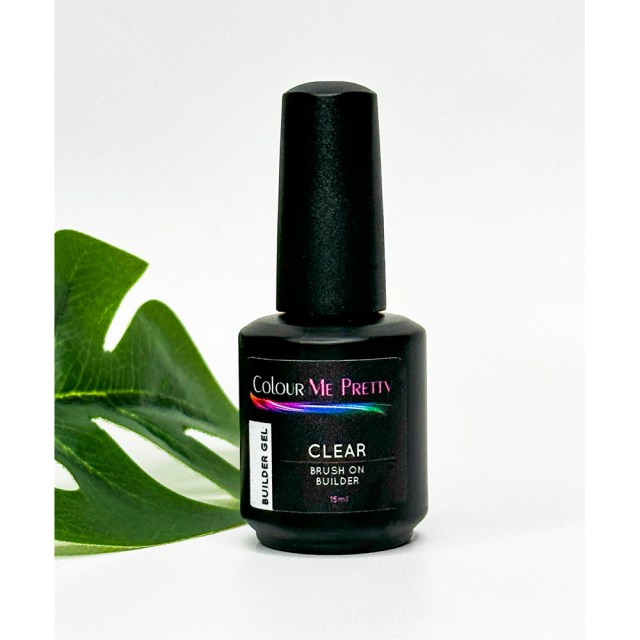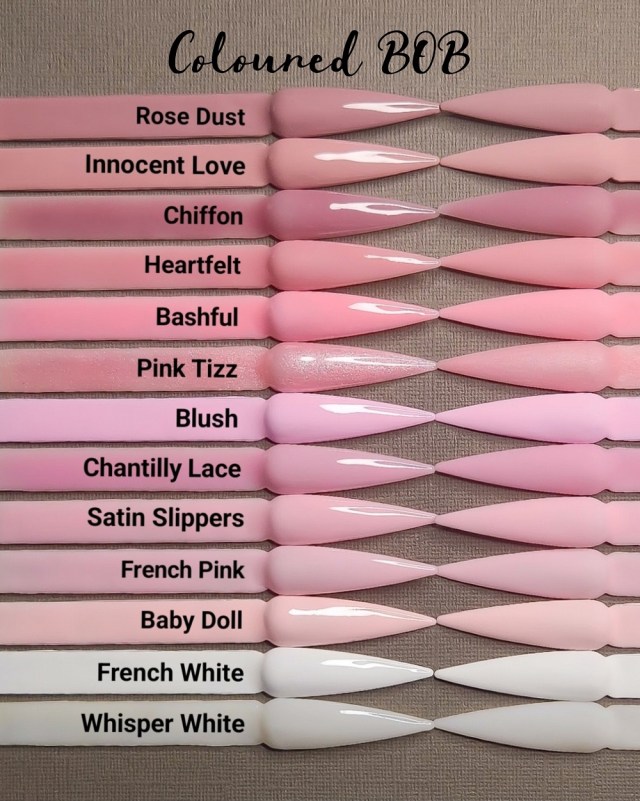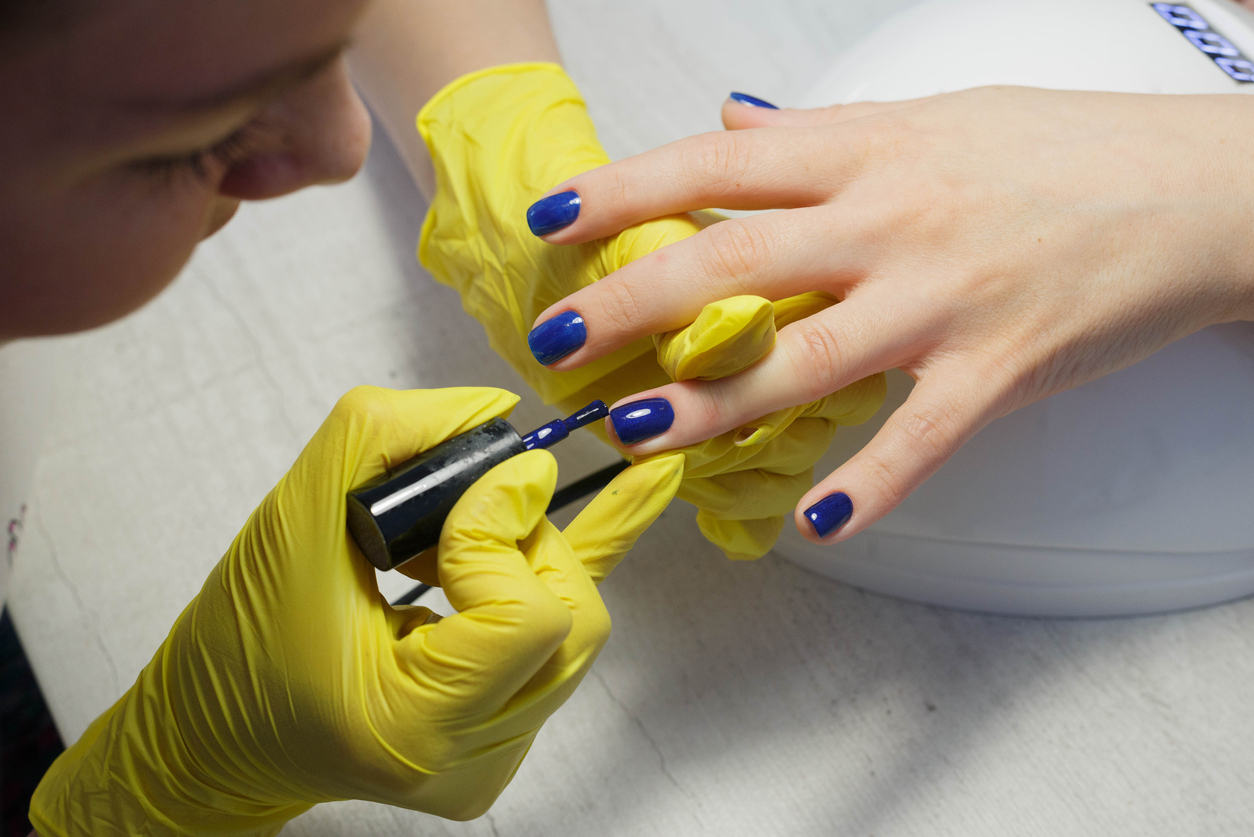Builder-in-a-Bottle (BIAB) nails are a trending service offered by nail technicians across the globe and, increasingly, in Australia.
The offering was first developed by UK brand, The Gel Bottle nearly a decade ago. Since its expansion into 30 countries, BIAB nails have grown in popularity as an effective alternative to acrylics.
Various product iterations have been developed in recent years. Australian gel nail supplier, Colour Me Pretty (CMP) was astute to the trend, developing their very own Brush on Builder (BOB) for distribution.

What is BIAB?
CMP owner, Melissa Elliott and CMP head trainer, Tricia Christie spoke to Professional Beauty on the service. “BIAB or BOB is a brush on builder gel, exactly as its name suggests,” the pair said. “It’s versatile and can be used as an overlay over natural fingernails and toenails. It can also be used to build extensions on nails and give an apex, providing both structure and stability to the extensions.”
There are said to be few differences between The Gel Bottle and CMP’s builder gels, although some ingredients do vary. Melissa and Tricia believe the viscosity of The Gel Bottle’s BIAB is “slightly thicker” than that of CMP.
BIAB v gel v shellac v acrylic
“[Compared to gel, shellac and acrylic], BOB/BIAB is a quicker process to apply and remove with minimal, if any filing needed to complete the application. Acrylic is also applied differently. Acrylic is less flexible than BOB/BIAB as it is more hard-wearing. Shellac and gel polish don’t have the ability to build structure and an apex like BOB/BIAB, the endurance, or the viscosity that BOB/BIAB has.”
It’s for this reason nail technician and owner of Studio M., Emma Coillet has opted to work with builder gel alone. “Gel is breathable and offers flexibility so this means less risk of snaps and breaks,” Emma told PB after a recent visit to her Sydney-based salon.
“The product remains thin after each application, and each appointment is an infill rather than a complete soak off. There are also no fumes with BIAB,” Emma adds. Emma exclusively uses The Gel Bottle on her clients. “I looked for a product that is of high quality and that would hold up no matter what my client does for work or in their day-to day-life,” Emma said.
“Once I had used [BIAB] on a few clients, I came to realise that the quality was exactly what I was looking for. The colours are highly pigmented and keep their shine all the way through to their next appointment. The Gel Bottle also has a team and warehouse in QLD, so orders only take a few days to arrive. The Australian distributors are great at answering any questions.”

How to apply BIAB
CMP’s BOB products are available in individual shades. After washing and prepping the nails, Melissa and Tricia recommend applying one coat of a CMP Base Coat before curing, followed by one coat of CMP Clear BOB before curing again. This step can be repeated until the desired thickness is achieved. Two to three coats of a coloured BOB of choice can also be applied on top. A gel polish can also be added, if desired. “There is no need to use a base coat when applying the coloured BOB over the clear BOB, however.”
“If you find your gel has set thicker in some parts of the nail bed, you can use a file to file it down until you’re happy with the finish,” the pair add. “Prior to filing, I would remove the tacky layer so as not to ruin your file.”
BOB/BIAB nails can typically last a minimum of three to four weeks. “It’s one of the quickest nail services available. The results, longevity and durability are a testament to this awesome product. Due to the speedy service time, nail technicians don’t need to charge too much, so it’s more affordable for the client.”
“It’s one of the quickest nail services available. The results, longevity and durability are a testament to this awesome product.”
To remove, the top coat seal should be broken by scratching with a nail file. Product is then soaked off in acetone pads for five to ten minutes. “If a technician is confident and qualified with an electronic nail file (eFile), this is also another method of removal,” Melissa and Tricia said.
Training in BIAB
Education on builder gel application is increasingly featured in the curriculums of training institutions and private educators in Australia. Melissa and Tricia argue training is required “to ensure you get the correct ratio of monomer and polymer, and to perfect the technique.”
“Training in BOB would depend on your skill level. If the person was a student or beginner, providing they have the appropriate equipment needed to perform the service, training can be achieved in as little as one to three hours,” the pair explained. “The structure of the training would include all the processes of nail prep and application of BOB, including basic nail shaping.”
Emma, who recently attained her Certificate III in Nail Technology from TAFE NSW is pleased to see more and more nail technicians training in the field. “This ensures that anyone looking to learn this technique will be taught the correct way so that no damage or hurt is caused to the clients, as it can be a very particular technique,” Emma said.
For rising stars of the nail industry like Emma, switching to builder gel services should be seen as a “positive change”. “[Using better quality products] also comes down to the clients being more aware of what products they are wanting on their nails. Education over Instagram has been a big help in this.”
Read the current issue of our digital magazine here:
- For more news and updates, subscribe to our weekly newsletter
- Follow us on Instagram
- Like us on Facebook
- Join Australia’s largest network of beauty industry professionals on LinkedIn
- Subscribe to our print magazine
Have an idea for a story or want to see a topic covered on our site and in our pages? Get in touch at info@professionalbeauty.com.au.

